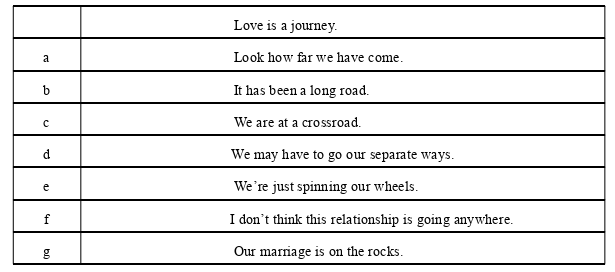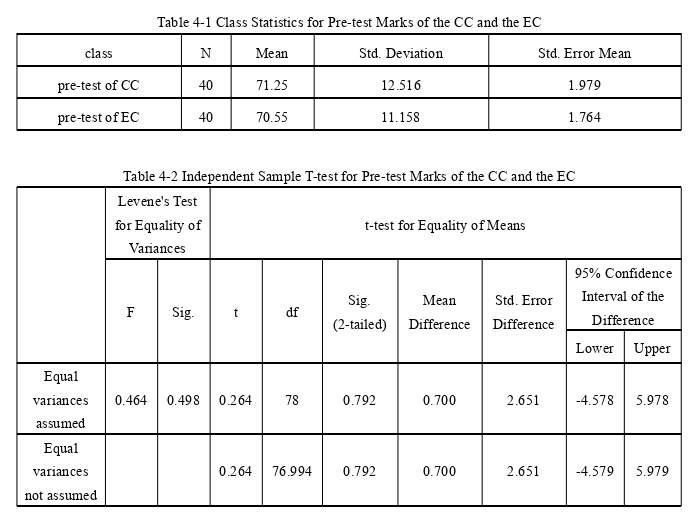本文是一篇英语论文,该研究对初中英语介词教学有所启示。在传统英语介词教学方法的基础上,强烈建议教师学习先进的语言学理论,并将其应用于英语介词教学中。在应用语言学理论时,教师要对如何使用这些理论给出明确的解释。
Chapter One Introduction
1.1 Research Background
As is known to us, phonetics, vocabulary and grammar are the three fundamentalcomponents of the English language. When it comes to vocabulary, Wilkins (1972) holds thebelief that we can express nothing without vocabulary. Therefore, it is apparent that vocabularyserves as the most basic role among the three components. As form words of the Englishvocabulary, prepositions can not be overlooked as they connect words together to form sentences.Bander (1978) observes prepositions as frequently used words in English speech and writing. Ina word, people cannot communicate without prepositions and prepositions can’t be neglected.Prepositions, though simple in form and limited in quantity, can express abundant senses. Itmeans that the meanings of prepositions can not be understood only through the core orprototypical meanings. We need to derive the extended meanings based on the prototypicalmeanings and specific contexts. According to the traditional method of preposition teaching, thedifferent meanings of a preposition are unrelated to each other and the collocation of apreposition are fixed and conventional. When taught the different meanings of a preposition,students can not figure out the internal relation between the extended meanings and the coremeaning. They just mechanically memorize the meanings of a preposition one by one accordingto the given examples. However, it is easy for them to forget or confuse the different meanings ofprepositions. “Only less than 10% Junior EFL learners are able to comprehend and use themcorrectly” (Lindstromberg, 2001). Language researchers (Celce-Murcia & Larsen-Freeman, 1999)holds the belief that it is also challenging for second language learners to acquire Englishprepositions. As a result, the traditional method of preposition teaching increases the students’memory burden and results in students losing interest in English preposition learning gradually.We have to admit that the traditional preposition teaching method is not effective and it is atough task for English teachers to teach English prepositions. Therefore, new methods ofpreposition teaching are in urgent need.
1.2 Research Purpose
English prepositions are limited in number, but they are rich in meaning and flexible incollocation. In traditional English preposition teaching, the various meanings of a preposition areunrelated to each other and the collocation of a preposition are fixed and conventional. All themeanings of a preposition are listed and exemplified on the blackboard. Students are required tomemorize the meanings of a preposition by rote according to the given examples. They show lessinterest in English preposition learning and English preposition teaching in junior high schools isnot effective. English preposition teaching is regarded as a tough task in junior high schools.Therefore, this study tries to explore a new English preposition teaching method from thecognitive perspective and enhance the effectiveness of English preposition teaching in juniorhigh schools. Specifically, this study aims to explore the effects of the image schema theory andthe conceptual metaphor theory on the English preposition teaching in junior high schools andthe students’ attitudes towards the new preposition teaching based on the image schema theoryand the conceptual metaphor theory.
Chapter Two Literature Review
2.1 The Image Schema Theory
In this part, concept, features and classification of image schema will be shown in detail.
2.1.1 Concept of Image Schema
Li (2007) holds the belief that image schema is so widely used that it is considered to be asignificant concept in cognitive linguistics. As far as Langacker (1987) is concerned, the term“image” stands for the occurrence of a perceptual sensation when the corresponding perceptualinput is absent. The “term” schema represents a structure or framework which is well-organized.The structure or framework is about objects and relations. The development of cognitivelinguistics contributes to the combination of the two terms. Thus, the new term “image schema”comes into being, which is a great advance in cognitive linguistics. However, different cognitivelinguists define image schema from a different perspective. Johnson, Lakoff and Langacker’sperspective to image schema theory is presented in this part.
According to Li (2007), it is Lakoff and Johnson that first propose the concept of imageschema. In 1987, the concept of image schema is put forward at the same time by Lakoff in hisbook The Body in the Mind and Johnson in his book Women, Fire and Dangerous Things.Johnson (1987: 14) claims that “An image schema is a recurring dynamic pattern of ourperceptual interactions and motor programs that gives coherence and structure to ourexperience”.
2.2 Conceptual Metaphor Theory
In this part, concept, characteristics, working mechanism and classification of conceptualmetaphor will be presented in detail.
2.2.1 Concept of Conceptual Metaphor
Lakoff and Johnson are the first to put forward the concept of conceptual metaphor. They(1980) claim that metaphor is so pervasive in our daily life that it exists not only in language butalso in thought and action. In other words, what we think and act are in fact metaphorical innature. And they define conceptual metaphor as “the understanding and experiencing one kind ofthing in terms of another (Lakoff & Johnson, 1980: 5)”. In other words, conceptual metaphor islabeled as mode with whose help we human beings thinking and talking. The following exampleis employed to explain conceptual metaphor. In the example LOVE IS A JOURNEY, we canunderstand the target domain LOVE with the help of the source domain JOURNEY. A largenumber of metaphorical expressions can be derived from this conceptual metaphorsystematically. The metaphorical expressions will be shown below.

Chapter Three Research Methodology.............................. 17
3.1 Research Questions.................................17
3.2 Research Subjects...................... 17
3.3 Research Instruments.......................................... 18
Chapter Four Results and Discussion.......................................... 32
4.1 Result and Discussion of Research Question One ............................32
4.1.1 Result and Discussion of Pre-test for CC and EC ..............................32
4.1.2 Result and Discussion of Post-test for CC and EC ........................................33
Chapter Five Conclusion.....................................48
5.1 Major Findings........................................48
5.2 Implications................................49
Chapter Four Results and Discussion
4.1 Result and Discussion of Research Question One
In this part, a comparison between the experimental class and the control class in thepre-test is made to see whether the two classes are at the same proficiency level. A comparisonbetween the two classes in the post-test is made to test the effects of the new preposition teachingbased on the two theories. Independent sample t-test is used to mark these differences and makethis study more convincing.
4.1.1 Result and Discussion of Pre-test for CC and EC
In order to check whether there is significant difference between the control class and theexperimental class in English preposition learning, a pre-test is carried out before the experiment.The pre-test includes 50 items with 100 scores in total. The 50 items are multiple-choicequestions which all related to prepositions. Choose the best answer from the four given choicesfor each sentence. The various meanings of prepositions are manifested in these sentences. Thescores of the two classes are collected respectively as pre-test data. The data are analyzed withthe help of the software SPSS. T-test is used to test whether there is significant difference of thesubjects’ performance in the pre-test. The mean scores of these two classes are shown in Table4-1 and the result of the t-test for the pre-test is shown in 4-2.

Chapter Five Conclusion
5.1 Major Findings
This study tries to explore English preposition teaching based on the image schema theoryand the conceptual metaphor theory in junior high schools, using the following researchinstruments: pre-test, post-test, pre-questionnaire, post-questionnaire and interview, combinedwith the quantitative method and the qualitative method. The study attempts to answer thefollowing two questions: 1)What are the effects of the image schema theory and the conceptualmetaphor theory on English preposition teaching in junior high schools? 2)What are the students’attitudes towards English preposition teaching based on the image schema theory and theconceptual metaphor theory in junior high schools? After an experiment which lasts for nearly asemester, the data are collected and analyzed carefully. Through the analysis of the data, themajor findings are presented as follows.
First, English preposition teaching based on the image schema theory and the conceptualmetaphor theory can facilitate students’ preposition learning effectively. Through the analysis ofthe two classes in the pre-test and the post-test, it is clear that the the CC and the EC are nearly atthe same level in the pre-test. However, after a semester’s instruction with two different methods,the situation has changed a lot in the post-test. There is a significant difference between the twoclasses’ performance. The mean score of the EC is apparently higher than that of the CC. It isobvious that the new English preposition teaching method based on the image schema theory andthe conceptual metaphor theory is far more effective than the traditional preposition teachingmethod. In other words, the new English preposition teaching method based on the imageschema and the conceptual metaphor theory is of much benefit to the students’ Englishpreposition learning.
Second, most of the students in the EC take a positive attitude towards the Englishpreposition teaching based on the image schema theory and the conceptual metaphor theory.From the pre-questionnaire conducted in the EC before the experiment, it can be seen that almostall the students in the EC learn the various meanings of a preposition by rote before theexperiment. They can’t figure out the relations between the extended meanings and the core meaning. They just try their best to memorize all the meanings of a preposition through givenexamples. However, from the post-qustionnaire conducted after the experiment, it is clear thatthe students in the EC are very happy with the new English preposition teaching method basedon the image schema theory and the conceptual metaphor theory. They show great interest in thenew English preposition teaching method. With the help of the new method, students in the ECcan figure out the relations between the core meaning and the extended meanings of apreposition. They find it much easier to learn English prepositions with the new method. Moreimportantly, they expect to learn more prepositions and even other polysemous words with theimage schema theory and the conceptual metaphor theory.
reference(omitted)
